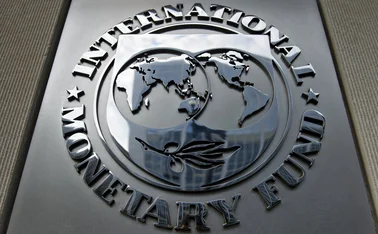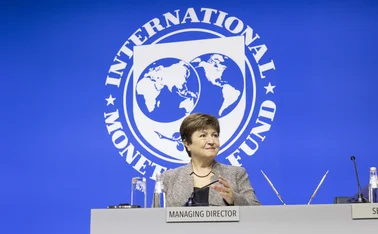
BIS weighs possible shift in global liquidity conditions
Nervy markets struggle to digest rates outlook, as BIS research finds deeper shift may be underway

Global liquidity could be entering a new phase that poses trouble for over-indebted firms, analysis published by the Bank for International Settlements finds.
The latest BIS quarterly review, published on December 4, highlights nervy recent moves in markets, overlaid on a possible deeper shift in conditions.
Markets displayed “heightened sensitivity” to news over the review period, Claudio Borio, head of the BIS monetary and economic department, told journalists. The quarterly review covers the period from September 9 to November 24.
Initially, investors positioned themselves for a period of “higher for longer” interest rates. However, the mood changed “markedly” in November, due to central bank communications and improving inflation data, Borio said. Investors started betting on interest rate cuts in advanced economies as soon as the first half of 2024, a view central bankers have pushed back against in recent remarks.
EME financial markets continued to grapple with high US yields and the prospect of accelerating capital outflows, before getting some respite in November
BIS review
Markets “oscillated” as investors tried to understand the changing outlook, the review says. Stock prices fell for most of the review period before rallying sharply, and bond prices followed a similar pattern. Borio said this simultaneous movement was “quite unusual” and cut demand for bonds as a hedge, contributing to higher yields.
Meanwhile, emerging market economies (EMEs) are having to cope with the global implications of uncertainty over rates, particularly the outlook for the US. “EME financial markets continued to grapple with high US yields and the prospect of accelerating capital outflows, before getting some respite in November,” the review said.
The BIS tracks this worldwide picture of funding conditions via its global liquidity indicators. A feature published alongside the quarterly review breaks down recent developments in global liquidity into phases, and suggests a new phase may have begun.
Bryan Hardy and Goetz von Peter highlight how “soaring bank credit” in the run-up to the great financial crisis led to a loosening of global liquidity. After the crisis, loose conditions continued, but the main source of funding shifted from the banking sector to the bond markets.
“Dollar credit expanded the most, particularly to borrowers in emerging market economies,” Hardy and von Peter say of the second phase. “The rising shares of bond finance, dollar credit and credit to EMEs became the distinguishing features of this phase.”
Since the pandemic, however, the global financial system has undergone “another major shift”, the authors say. Surging inflation and the synchronised increase in interest rates around the world led to a tightening in global liquidity. US rates rose “earlier and faster” than elsewhere, pushing up the dollar and leading to an especially strong squeeze on dollar funding.
The authors point to three key elements of the shift. Foreign currency credit has contracted “significantly” as a share of global GDP. This contraction was driven in particular by a decline in dollar credit. And borrowers in EMEs faced the steepest contraction.
Hardy and von Peter describe the recent move as a “departure from pre-pandemic trends”. Whether it represents a truly new phase for global liquidity will depend on how persistent conditions prove, they say. But it could spell trouble for EMEs that built up large foreign-currency debts during the looser phases of global liquidity.
“A key question is whether the contraction in dollar credit, a staple of EME finances, will continue and at what pace,” Hardy and von Peter say. “More generally, high interest rates put upward pressure on the cost of credit, typically a harbinger of credit losses that the financial system will need to absorb.”
Only users who have a paid subscription or are part of a corporate subscription are able to print or copy content.
To access these options, along with all other subscription benefits, please contact info@centralbanking.com or view our subscription options here: http://subscriptions.centralbanking.com/subscribe
You are currently unable to print this content. Please contact info@centralbanking.com to find out more.
You are currently unable to copy this content. Please contact info@centralbanking.com to find out more.
Copyright Infopro Digital Limited. All rights reserved.
You may share this content using our article tools. Printing this content is for the sole use of the Authorised User (named subscriber), as outlined in our terms and conditions - https://www.infopro-insight.com/terms-conditions/insight-subscriptions/
If you would like to purchase additional rights please email info@centralbanking.com
Copyright Infopro Digital Limited. All rights reserved.
You may share this content using our article tools. Copying this content is for the sole use of the Authorised User (named subscriber), as outlined in our terms and conditions - https://www.infopro-insight.com/terms-conditions/insight-subscriptions/
If you would like to purchase additional rights please email info@centralbanking.com







